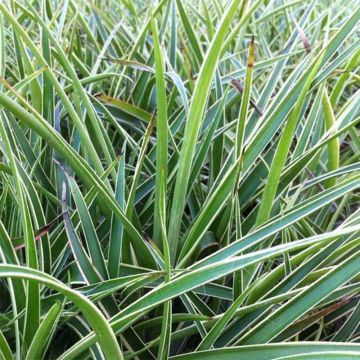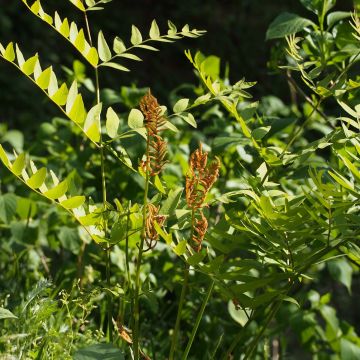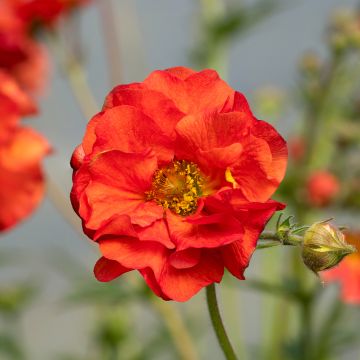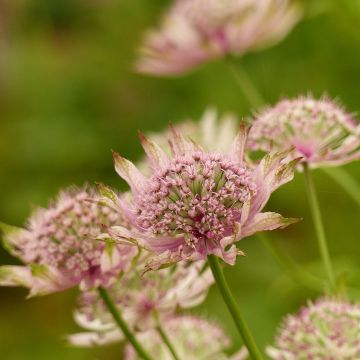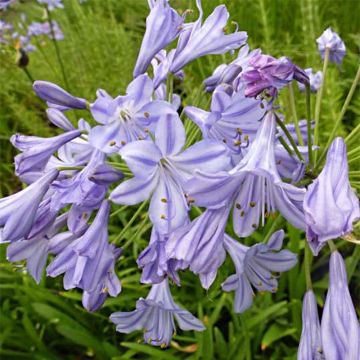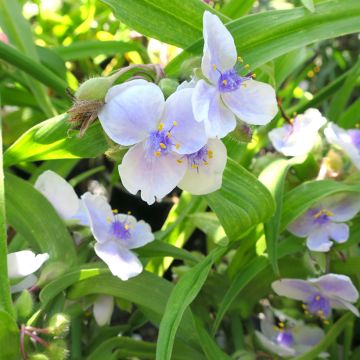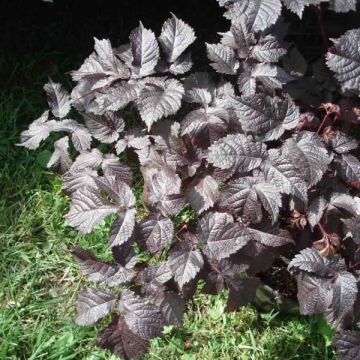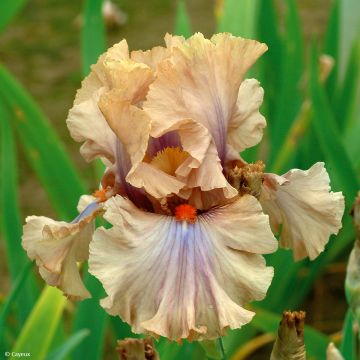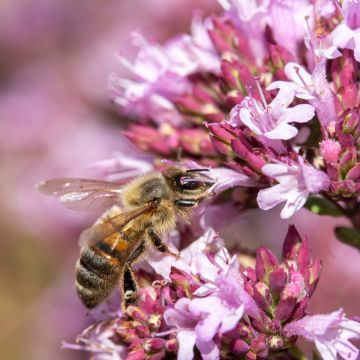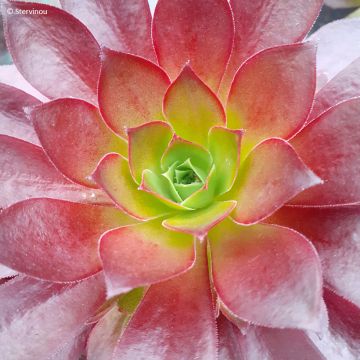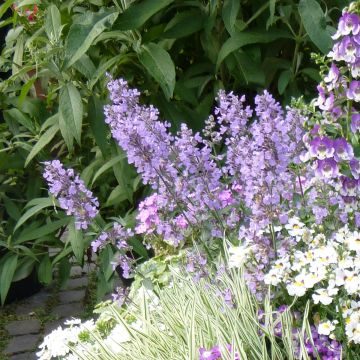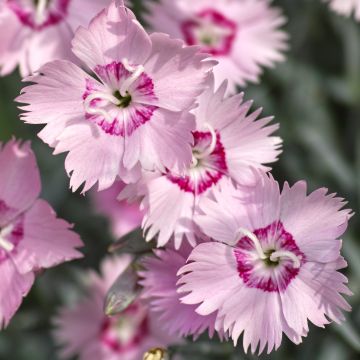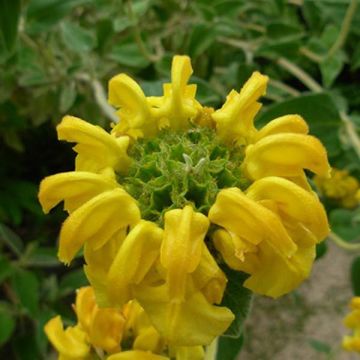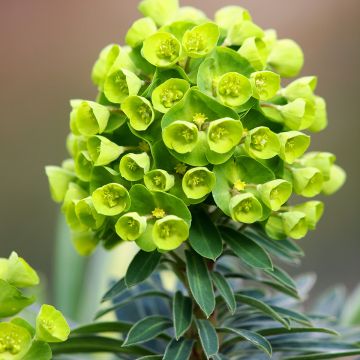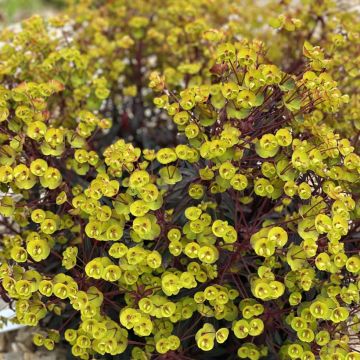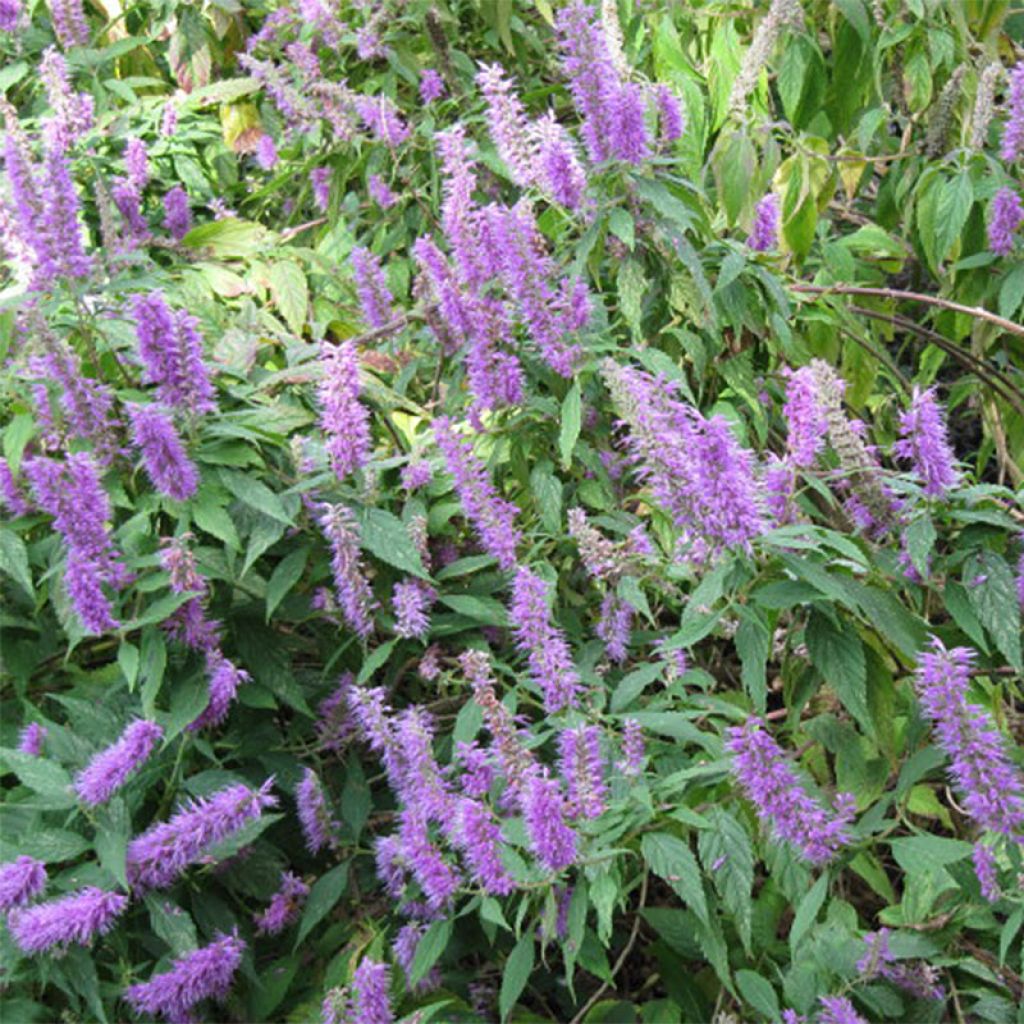

Elsholtzia stauntonii - Mint Bush
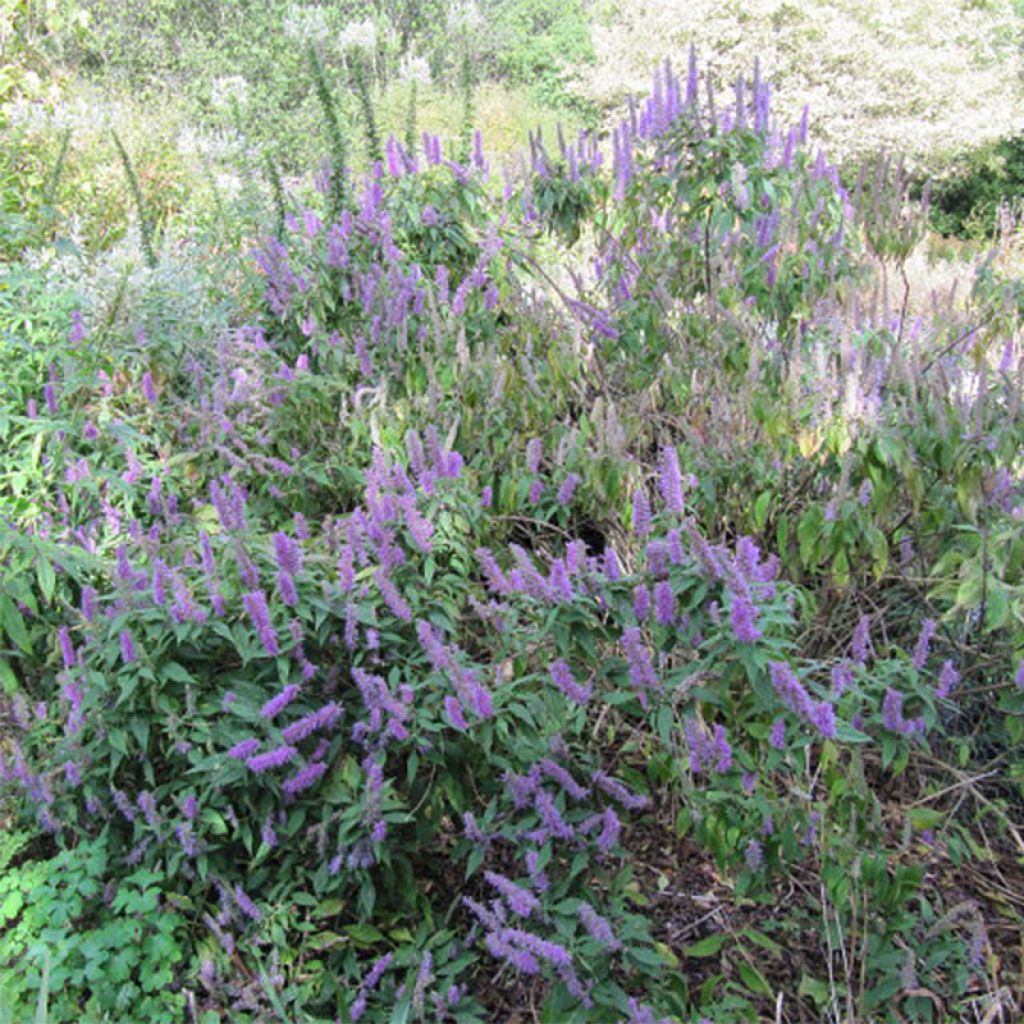

Elsholtzia stauntonii - Mint Bush
Elsholtzia stauntonii - Mint Bush
Elsholtzia stauntonii
Mint Bush
young plant received in perfect condition, replanted immediately, despite the unexpected cold, looking healthy; to be continued.
Pierre, 08/04/2021
This item cannot be shipped to the selected country
Delivery charge from €5.90
More information
Schedule delivery date,
and select date in basket
This plant carries a 12 months recovery warranty
More information
We guarantee the quality of our plants for a full growing cycle, and will replace at our expense any plant that fails to recover under normal climatic and planting conditions.
From €5.90 for pickup delivery and €6.90 for home delivery
Express home delivery from €8.90.

Does this plant fit my garden?
Set up your Plantfit profile →
Description
Elsholtzia stauntonii owes its nickname of Mint Bush to the menthol aroma exhaled by its leaves when crushed. A woody perennial shrub with a beautiful candelabra-like silhouette, this bush bristles at the end of summer with upright, pink-lilac floral spikes, and foliage that becomes shiny later in the season. It is a non-invasive, unusual sun-loving plant, easy to grow in well-drained soil, interesting for its late flowering and autumn colours that match well with asters and shrubby salvias.
Elsholtzia is a plant of the lamiaceae family, which includes a large number of aromatic plants such as thyme, lavender, sage, and rosemary. Its origins are in northern China. It is a fast-growing bushy perennial plant with a woody base, whose stems are often cut back by the cold. Its habit is upright and dense, composed of vertical and branching stems originating from the base. At maturity and under good growing conditions, Elsholtzia stauntonii will easily reach 1m (3ft) high, even 1.50m (5ft), with a spread of 80cm (32in) to 1.20m (4ft). The square-sectioned stems bear deciduous, opposite leaves, 10 to 15cm (4 to 6in) long, with strongly toothed edges, an elongated triangular shape, hairy and medium green. They turn beautiful shades of red to purple in October and are loaded with fragrant essential oils, with a menthol scent revealed when crushed. The nectar-rich flowering begins towards the end of August and lasts until October. It is the current year's stems that produce long, narrow, and dense flower spikes at their tips. The tiny flowers are tightly packed together and have a colour between pink and lavender. They are tubular, very hairy, and adorned with a prominent pistil that gives the inflorescence a fluffy appearance.
Elsholtzia stauntonii resembles a large candelabra and its design catches the eye, as much as the superb colour association between the flowers and the autumn foliage. More elegant than a Hebe, exotic like a viper's bugloss, it is also a robust, hardy plant, undemanding with regards to soil as long as it is well-drained. In addition to all these qualities, it has a good tolerance to summer drought when well-established. For all these reasons, the Mint Bush deserves to be planted more in our gardens. Plant it in full sun, in a large shrub border, on a slope, in a large rockery, or in the background of a herbaceous border. Beautiful scenes can be created by associating it with evergreen ceanothus, Vitis vinifera purpurea (the dyeing grape), Caryopteris, Perowskia, salvias, tree clover Lespedeza, and large autumn asters like Aster laevis or Aster turbinellus. The overall look can be lightened with grasses such as pink-flowered Muhlenbergia capillaris, Eragrostis spectabilis, or trichodes Summer Strain, Miscanthus sinensis Yacu jima... the choice is vast, as is the palette of autumn colours.
The Mint Bush can also be grown in a large pot or container on the terrace, with careful attention paid to watering and feeding.
Report an error about the product description
Elsholtzia stauntonii - Mint Bush in pictures
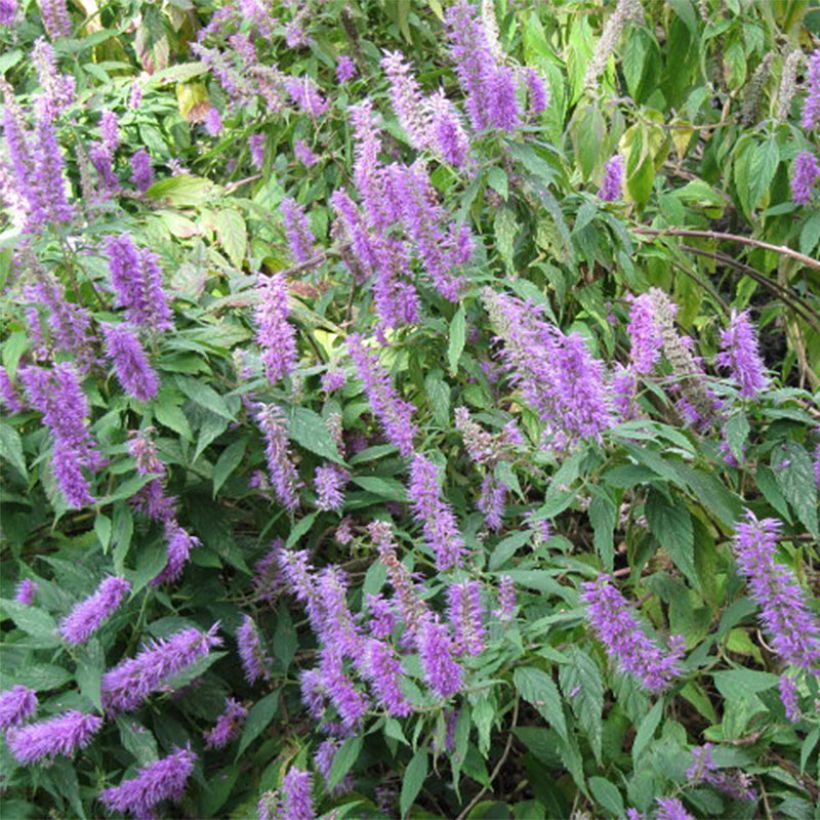

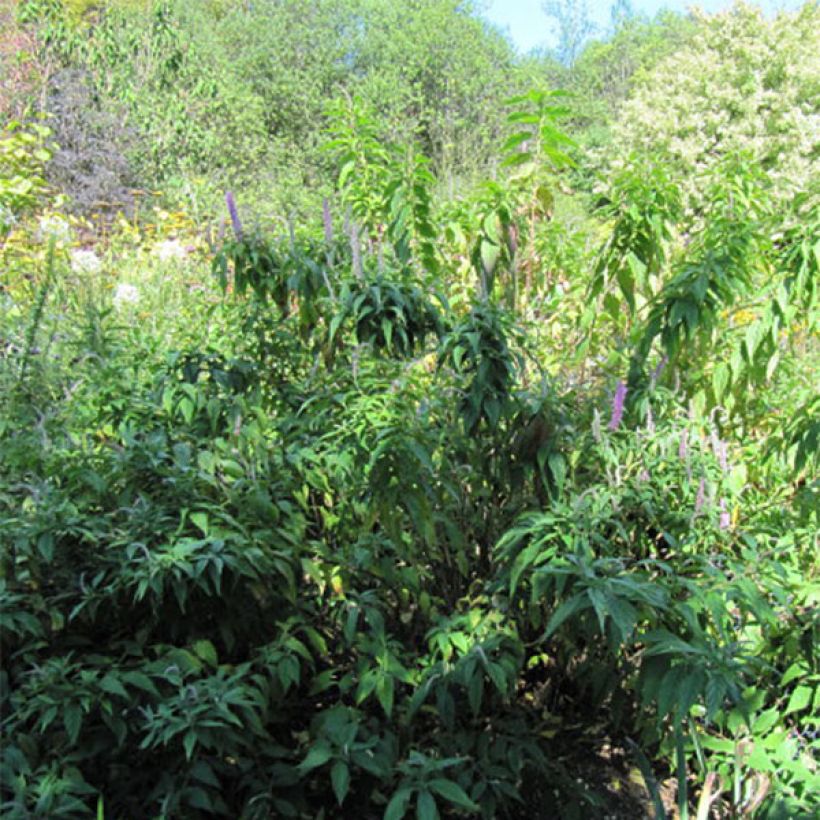

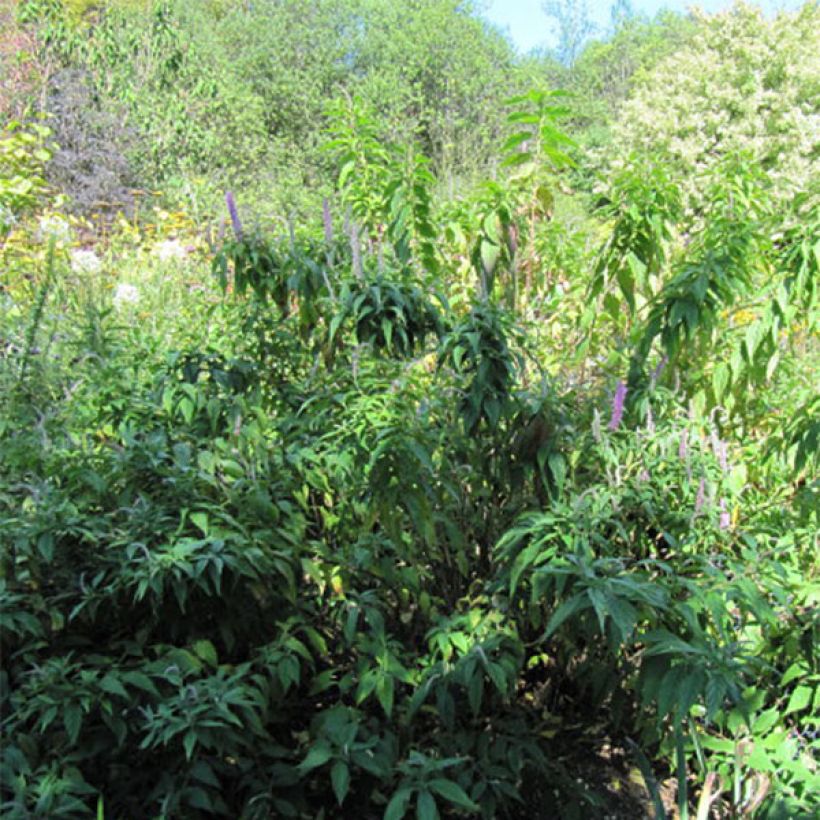

Flowering
Foliage
Plant habit
Botanical data
Elsholtzia
stauntonii
Lamiaceae
Mint Bush
China
Other Perennials A to Z
Planting and care
Plant Elsholtzia stauntonii in early spring in cold regions and autumn in hot and dry climates. Plant it in full sun, in well-drained soil, in a sheltered location away from dry and icy winds. This plant is undemanding in terms of soil type, it will grow in sandy soil as well as slightly acidic, neutral, or slightly chalky soil. In poor soil, it will remain smaller but live longer. It is sensitive to heavy frosts in waterlogged soil, especially if are prolonged. Once established, the Mint Bush can tolerate summer drought as long as the soil is sufficiently deep. Unlike many plants in the mint family, this one does not produce suckers and is not invasive.
Prune in late winter, before the start of vegetation. If pruned to ground level, the bush will not exceed 1m (3ft) in height and will be less dense. To allow it to reach its full potential, prune (if the branches have not completely frozen) to 50-60cm (20-24in) from the ground.
Planting period
Intended location
Care
-
, onOrder confirmed
Reply from on Promesse de fleurs
Mediterranean perennials
Haven't found what you were looking for?
Hardiness is the lowest winter temperature a plant can endure without suffering serious damage or even dying. However, hardiness is affected by location (a sheltered area, such as a patio), protection (winter cover) and soil type (hardiness is improved by well-drained soil).

Photo Sharing Terms & Conditions
In order to encourage gardeners to interact and share their experiences, Promesse de fleurs offers various media enabling content to be uploaded onto its Site - in particular via the ‘Photo sharing’ module.
The User agrees to refrain from:
- Posting any content that is illegal, prejudicial, insulting, racist, inciteful to hatred, revisionist, contrary to public decency, that infringes on privacy or on the privacy rights of third parties, in particular the publicity rights of persons and goods, intellectual property rights, or the right to privacy.
- Submitting content on behalf of a third party;
- Impersonate the identity of a third party and/or publish any personal information about a third party;
In general, the User undertakes to refrain from any unethical behaviour.
All Content (in particular text, comments, files, images, photos, videos, creative works, etc.), which may be subject to property or intellectual property rights, image or other private rights, shall remain the property of the User, subject to the limited rights granted by the terms of the licence granted by Promesse de fleurs as stated below. Users are at liberty to publish or not to publish such Content on the Site, notably via the ‘Photo Sharing’ facility, and accept that this Content shall be made public and freely accessible, notably on the Internet.
Users further acknowledge, undertake to have ,and guarantee that they hold all necessary rights and permissions to publish such material on the Site, in particular with regard to the legislation in force pertaining to any privacy, property, intellectual property, image, or contractual rights, or rights of any other nature. By publishing such Content on the Site, Users acknowledge accepting full liability as publishers of the Content within the meaning of the law, and grant Promesse de fleurs, free of charge, an inclusive, worldwide licence for the said Content for the entire duration of its publication, including all reproduction, representation, up/downloading, displaying, performing, transmission, and storage rights.
Users also grant permission for their name to be linked to the Content and accept that this link may not always be made available.
By engaging in posting material, Users consent to their Content becoming automatically accessible on the Internet, in particular on other sites and/or blogs and/or web pages of the Promesse de fleurs site, including in particular social pages and the Promesse de fleurs catalogue.
Users may secure the removal of entrusted content free of charge by issuing a simple request via our contact form.
The flowering period indicated on our website applies to countries and regions located in USDA zone 8 (France, the United Kingdom, Ireland, the Netherlands, etc.)
It will vary according to where you live:
- In zones 9 to 10 (Italy, Spain, Greece, etc.), flowering will occur about 2 to 4 weeks earlier.
- In zones 6 to 7 (Germany, Poland, Slovenia, and lower mountainous regions), flowering will be delayed by 2 to 3 weeks.
- In zone 5 (Central Europe, Scandinavia), blooming will be delayed by 3 to 5 weeks.
In temperate climates, pruning of spring-flowering shrubs (forsythia, spireas, etc.) should be done just after flowering.
Pruning of summer-flowering shrubs (Indian Lilac, Perovskia, etc.) can be done in winter or spring.
In cold regions as well as with frost-sensitive plants, avoid pruning too early when severe frosts may still occur.
The planting period indicated on our website applies to countries and regions located in USDA zone 8 (France, United Kingdom, Ireland, Netherlands).
It will vary according to where you live:
- In Mediterranean zones (Marseille, Madrid, Milan, etc.), autumn and winter are the best planting periods.
- In continental zones (Strasbourg, Munich, Vienna, etc.), delay planting by 2 to 3 weeks in spring and bring it forward by 2 to 4 weeks in autumn.
- In mountainous regions (the Alps, Pyrenees, Carpathians, etc.), it is best to plant in late spring (May-June) or late summer (August-September).
The harvesting period indicated on our website applies to countries and regions in USDA zone 8 (France, England, Ireland, the Netherlands).
In colder areas (Scandinavia, Poland, Austria...) fruit and vegetable harvests are likely to be delayed by 3-4 weeks.
In warmer areas (Italy, Spain, Greece, etc.), harvesting will probably take place earlier, depending on weather conditions.
The sowing periods indicated on our website apply to countries and regions within USDA Zone 8 (France, UK, Ireland, Netherlands).
In colder areas (Scandinavia, Poland, Austria...), delay any outdoor sowing by 3-4 weeks, or sow under glass.
In warmer climes (Italy, Spain, Greece, etc.), bring outdoor sowing forward by a few weeks.


































